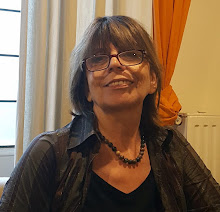Partly what you're doing is creating new experiences for yourself to flesh out and make more flexible your brain's ability to predict differently in the future. You could describe the brain as a scientist, you know, a scientist with a hypothesis — that's what a set of predictions are. It's a belief, a guess about what sensations are about to happen, and why they happen. That's where those emotions come from. And so like a good scientist, you could test and see which hypothesis is the correct one.”
Excerpt from this short and spot-on video:
Coaching is not therapy - that must be crystal clear for all the professional coaches.
But change is to be pursued in both fields of intervention, and also resistance to change is a challenging situation.
We use in our workshops the word probability not in the mathematical perspective but in the sense of give it a try, where ”it” is a new response to an old - and well known! - state.
So, I was pleased to notice that Lisa Feldman Barrett mention this very approach we also trust, she said: ”you could test”.
Also Nestworking group coaching workshop is focused on the very aim of ”make more flexible your brain's ability to predict differently in the future” (from the above transcript quote) - and in order to achieve that we use different appreciated perspectives.
Alfred Korzybski''s simple sentence "The map is not the territory" is a very useful - I would say - instrument to escape predictors of any sort, "trauma predictors" also.
Alfred Korzybski''s simple sentence "The map is not the territory" is a very useful - I would say - instrument to escape predictors of any sort, "trauma predictors" also.
Another one is to be aware of self-fulfilling prophecy, and to seek signs in the "territory" that might not support the expected negative outcome.
Another helpful practice is transactional analysis therapy - being aware of the games we play, of ego state we use to act, child and parent being predispose to "maps", therefore inflexibility, we need to grow adult state, "now and here" aka "territory" therefore flexibility.
Of course, NLP, neurolinguistic therapy is another therapy that uses mind-body connection.
Personally, I found being really effective "the inner game" technique, developed by Timothy Gallwey - the Self 1 is the one that sticks with the knowledge of traumatic event and predict it as soon as a slight sign is in sight, and the Self 2 is the one that actually is in contact with the reality - interestingly, Gallwey named those two "the teller" and "the doer" - in his first inner game take (on tennis).
Last but not least, Daniel Kahneman "remembrance self" and "experience self" are useful perspectives to spring useful techniques.
And speaking about techniques, the old findings about biofeedback in healing body disease are useful in healing mind dis-ease to.
Taking into account that ”remembrance self” is literally a story, we do use to ask our participants to write poems about experiencing nestworking to facilitate learning and change.
But the main and foremost learning and practice is about attention - a skill participants reports they use as never in their life. Palo Alto axioms is our grounding soil to raise this essential skill.







